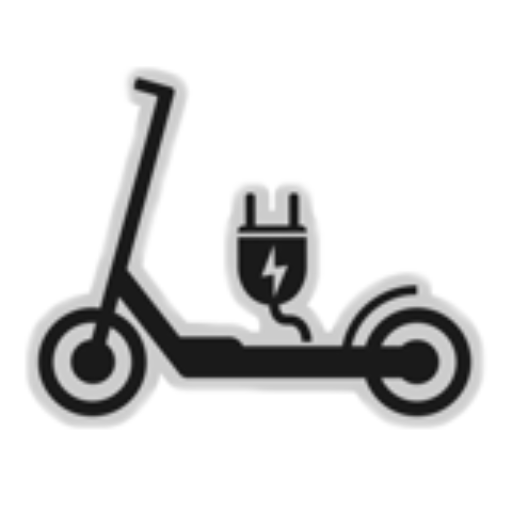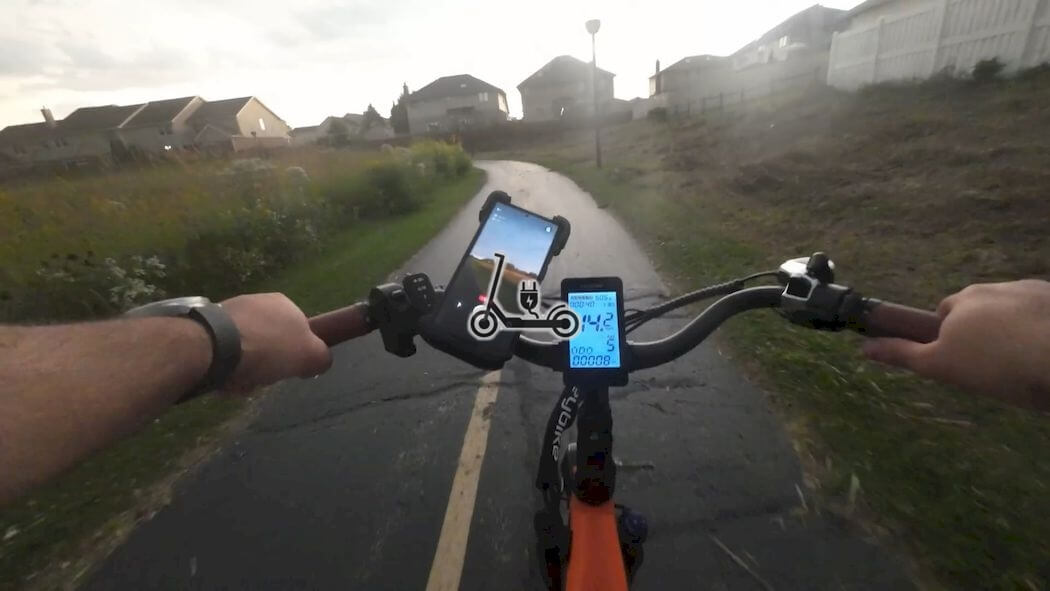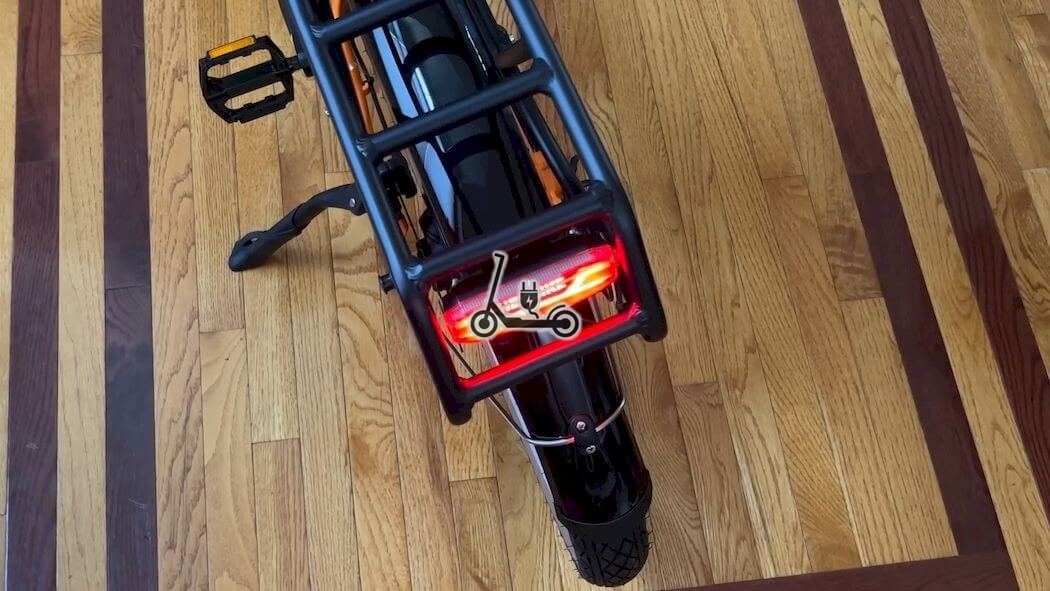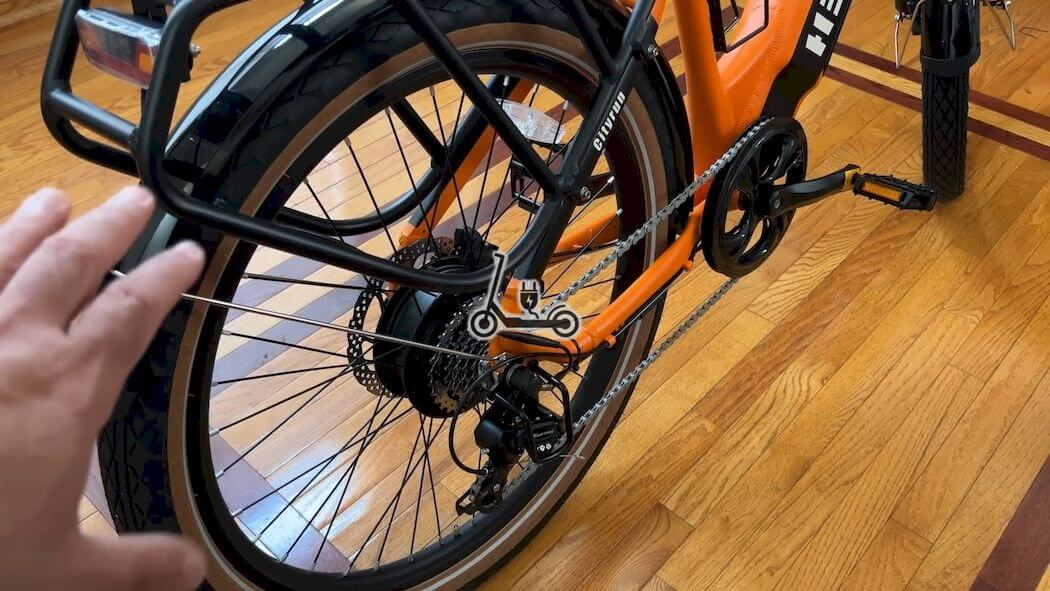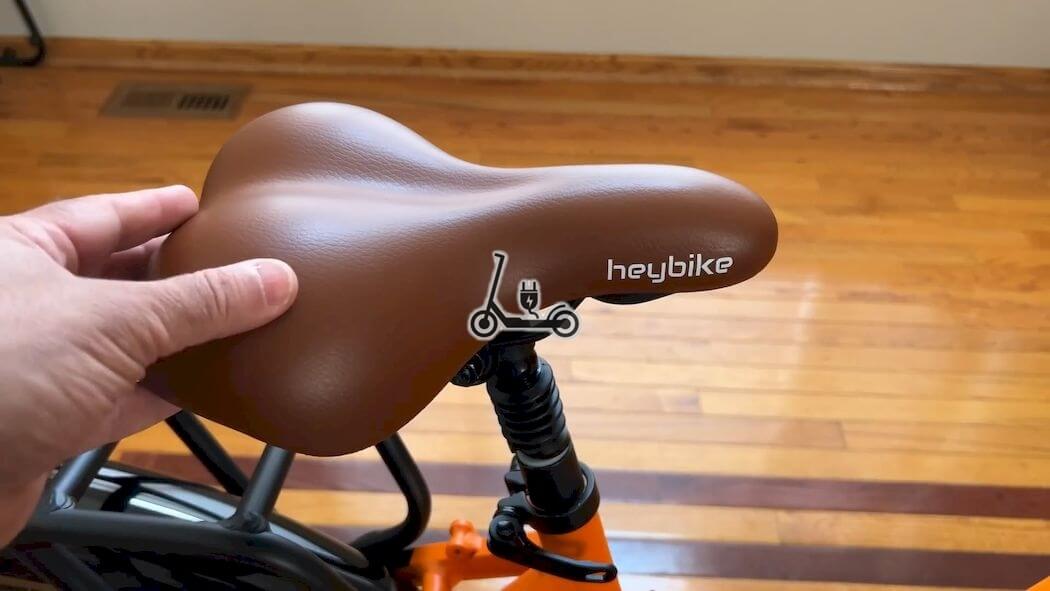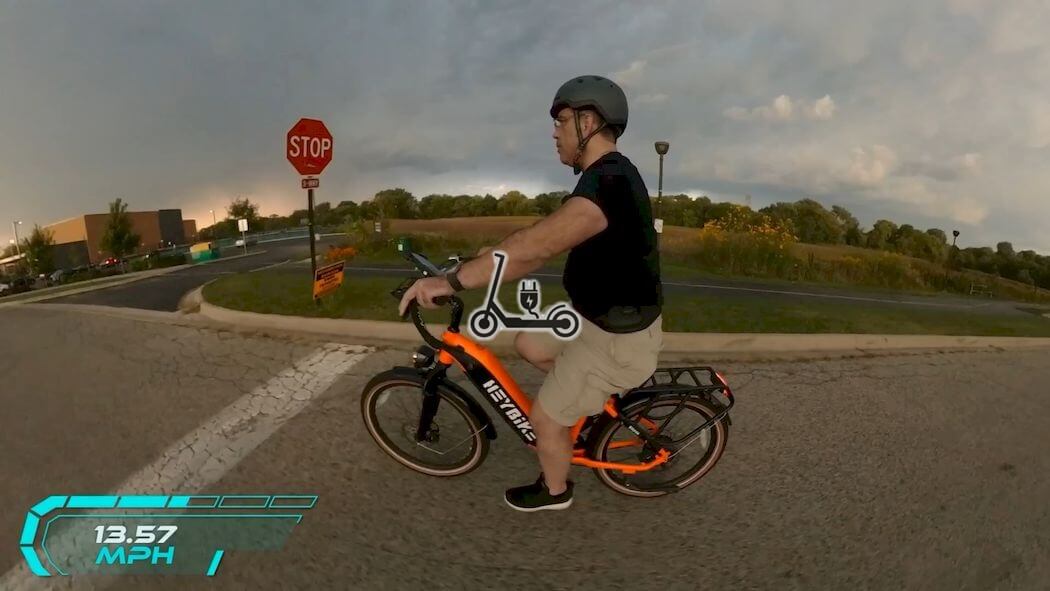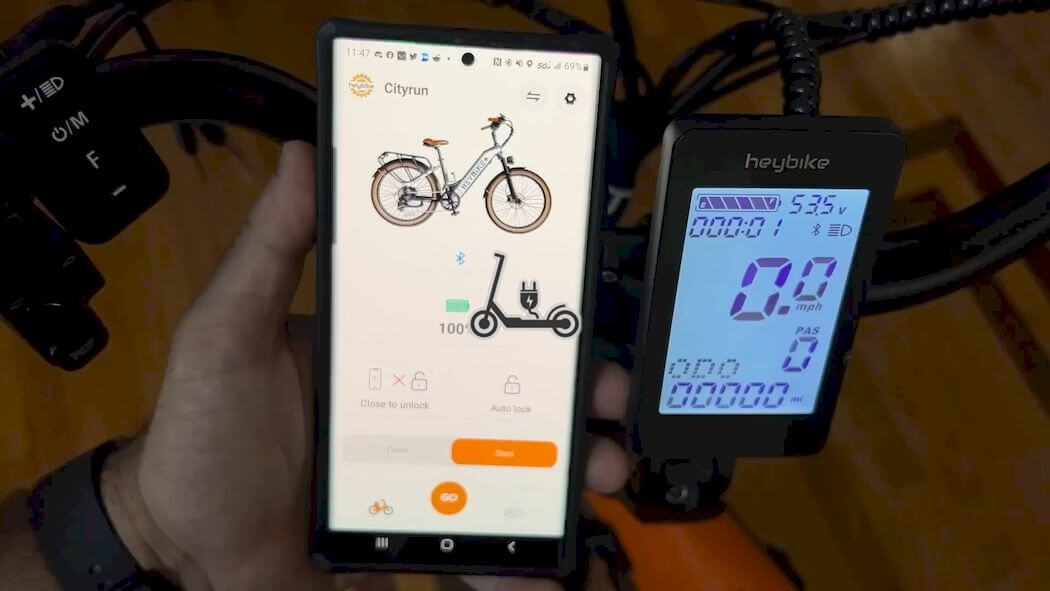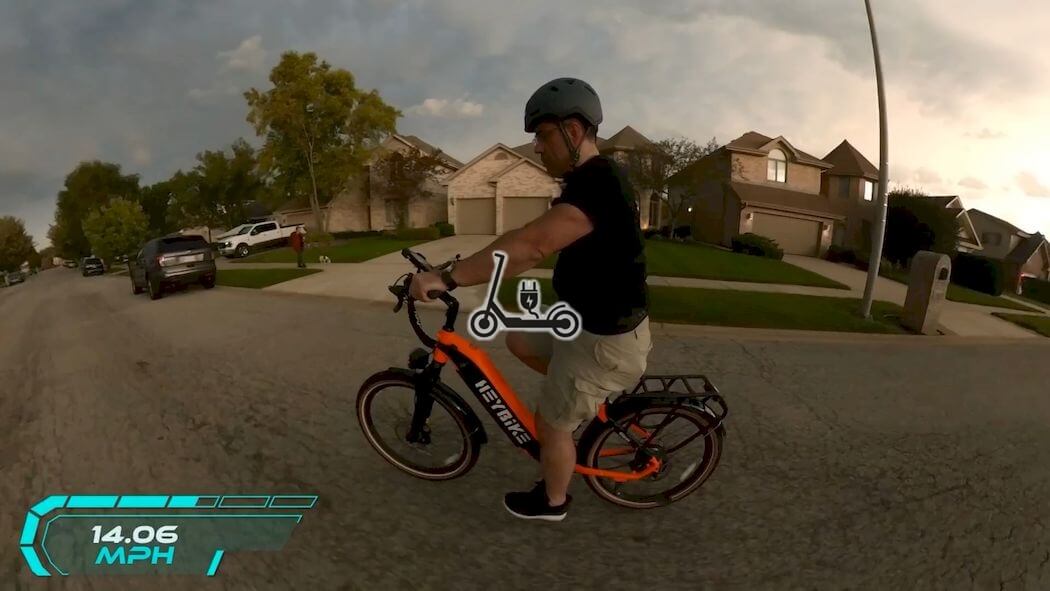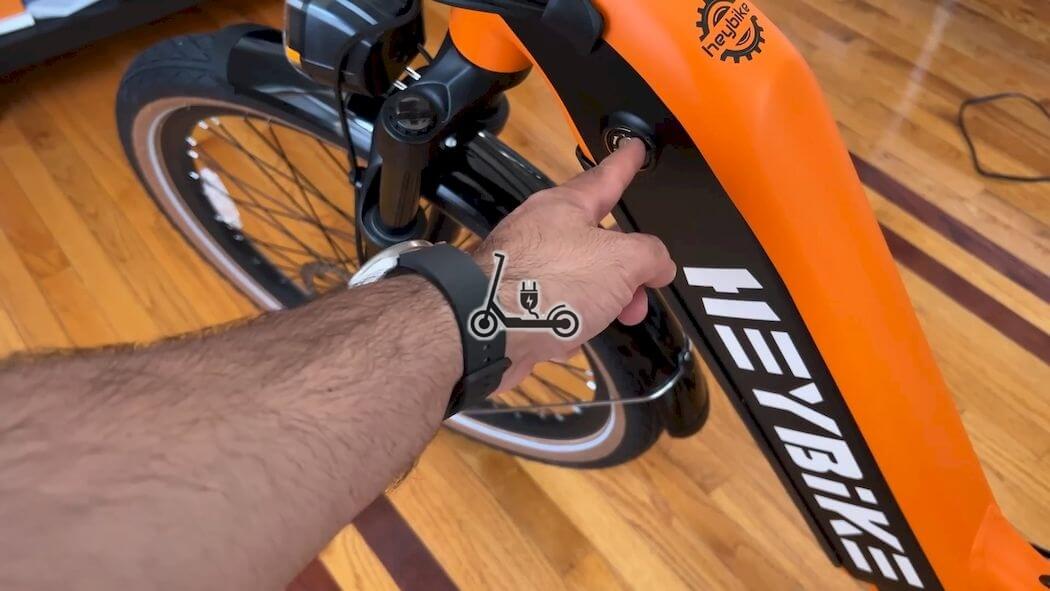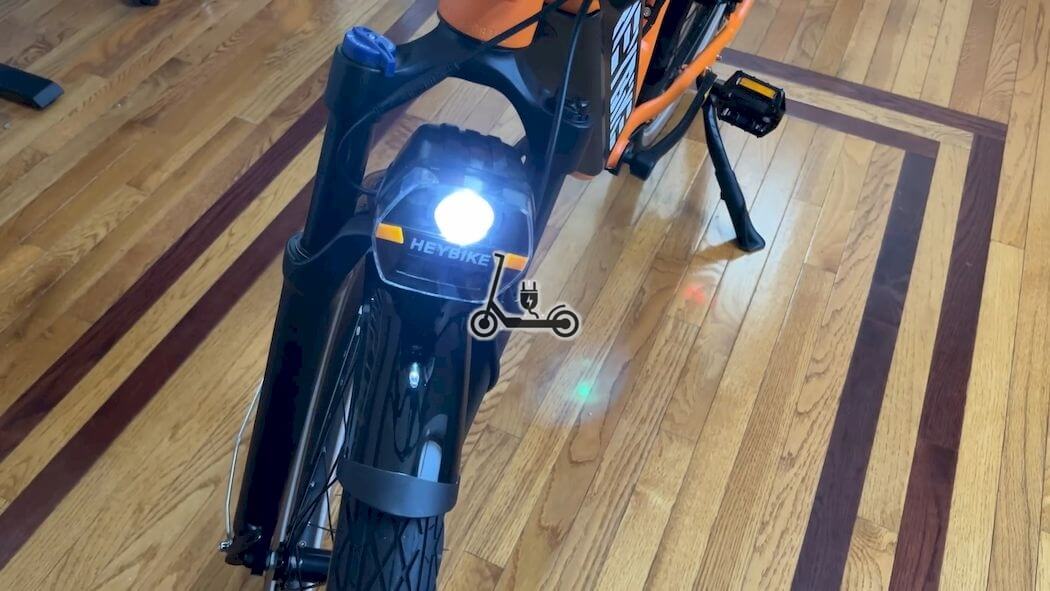The Heybike Cityrun is a high-end hybrid bike with far higher build quality than earlier models from the brand. Its strong motor easily conquers challenging slopes while providing a smooth ride that is improved by the wire-controlled shock absorbers. This is a fantastic option if you’re searching for a bike to make your commute easier.
The Heybike Ranger is one of a variety of e-bikes from Heybike that are feature-rich and reasonably priced but lack some of the complexity of more expensive competitors.
The Heybike Cityrun hybrid bike raises the bar for the brand thanks to its improved construction and smoother riding. Yes, this model costs a little more, but for those who ride frequently, the extra cost is justified.
| Motor | 500W |
| Battery | 48V 15AH |
| Speed | 21 mph |
| Estimated Max Range | 40(Throttle)/55 miles(PAS) |
| Tire | 26" x 2.5“ |
| Suspension | Hydraulic Suspension |
| Frame Types | Step-thru Frame |
| Charging Time | 3-4 Hours |
| Recommended Heightd Use | 5'4"-6'5" |
| Suggested Use | Neighborhood,Commute,Travel |
Video Review of Heybike Cityrun
Heybike Cityrun: Design and Build Quality
The package in which the bike is delivered must be mentioned at the outset of this evaluation. The bike is shipped by Heybike in a cardboard box with the front wheel and handlebars removed and covered in plastic, all of which is encased in expanding foam. Although it undoubtedly offers excellent protection during shipment, the bike emerges from the box looking like Han Solo who has been frozen in carbonite. It takes a lot of work to take all the parts out of the box; to prevent little pieces of foam from spreading all over the place, I’d suggest unpacking the bike outside.
The Heybike Cityrun then needs to be assembled after being released. The handlebars are attached after the front wheel is fastened using the quick-release mechanism. This job doesn’t take long because all the necessary tools are included in the box.
The Heybike Cityrun is a much better-built bike once it has been completed than the company’s Heybike Ranger folding bike. The aluminum alloy frame of the Heybike Cityrun is one piece, unlike the Ranger, which has obvious welding joints and a lot of wires. The rear motor’s wiring is concealed inside this frame and only emerges to connect to the bike’s computer near the handlebars.
Also concealed inside the frame is the brake cable that connects to the front and rear hydraulic disc brakes. Compared to typical caliper brakes, these brakes are more responsive and smoother.
Overall, the Heybike Cityrun is a much more expensive product than the A20, as was already established. It’s impressive that the Heybike Cityrun, although being bigger and not being a folding model, weighs less than the Ranger: 28kg is still a substantial amount, but this bike doesn’t feel heavy or difficult to lift.
Fenders are not included with this model from Heybike, but if you want them to match the 26-inch wheels, you may purchase a set from a third party.
This bicycle has an adaptable 7-speed Shimano transmission. With e-bikes, it might be challenging to pedal faster manually once you reach the top assisted speed because of the gearing; this is not a problem with this bike.
The front fork’s wire-controlled shock absorbers are a great touch because they can be locked in place for a stiffer ride on good terrain and unlocked to cushion bumps on dirt roads or subpar pavement. It was quite simple to switch between modes because I had the control right at my fingertips.
The Heybike Cityrun allows you to select from three Power Assisted modes once the motor is turned on (PAS). Pedal assistance is available in Mode 1 up to 15 km/h, Mode 2 up to 20 km/h, and Mode 3 up to a maximum of 25 km/h (this is the UK limit of 15.5mph). The computer can be forced, as I did, to show the current speed in mph rather than km/h.
Heybike Cityrun: Motor and Driving
When the motor should engage, the Heybike Cityrun uses a speed sensor, which by default reads 6 km/h. Then, assuming you continue pedaling, the 500W motor pushes you quickly up to the top limit in accordance with the PAS mode you’ve selected.
The system functions well overall, but the GoCycle G4’s torque sensor provides more precise control by activating the motor when necessary. As is the case with all speed sensors, the Cityrun requires caution when going slowly. In order to avoid any unwanted acceleration while cycling past parking lots, I discovered that it is best to set the PAS mode to 0.
The Cityrun requires the pedals to continue moving after you’re moving in order for the motor to continue pushing you forward in accordance with UK law. Slowly pedaling, I discovered that I could let the bike do the most of the effort; yet, the bike’s large wheels and numerous gears also contribute.
With the Cityrun, I could easily reach 25 mph on some of my commute routes by using manual power to go faster than the bike’s top speed. Once I reached my top speed on the smaller Ranger or GoCycle G4, I was physically unable to pedal any faster.
In general, climbing hills was simple, albeit it took some effort to reach the motor’s minimal assist level during hill starts. It would be nice to have a boost button similar to the one on the GoCycle in this situation. The full motor help is activated when the button is pressed, making challenging climbs even simpler to climb.
I found the Cityrun to be really pleasant for my commute (8 miles one way), thanks to the top-notch saddle and shock absorbers. I discovered that the Cityrun handled all roads excellently on both B-roads and major highways.
The Cityrun performed admirably on the off-road dirt track through the forest, even though I wouldn’t classify it as a suitable replacement for a mountain bike. The wire-controlled suspension eliminated the majority of the track’s bumps.
Heybike Cityrun: Battery and Range
The 48V 15AH battery was also able to fit inside the frame thanks to Heybike. You can either use the provided key to remove the unit and charge it outside or charge it in-place.
Heybike states that its range can go up to 56 kilometers. That number isn’t far off based on my personal experience, when I was found with slightly under half the power after two commutes (a total of 45 miles). The range will depend on how hard you push the motor, how much assistance you use, and how many hills you climb on the bike, but for a typical daily commute, the Cityrun offers enough power to get you through a few days without needing to recharge.
The Cityrun’s battery takes about seven hours to fully recharge, so I would simply plug it in overnight to have it ready to use the following day.
Heybike Cityrun: Conclusions
The Cityrun is more expensive than many of Heybike’s other bikes, but it’s well worth the extra money if you pedal frequently. It represents a clear improvement in construction quality. The Cityrun is more stylish and durable thanks to a much neater construction, and its hybrid design is fun to ride on both good and bad roads. The Heybike Cityrun is a terrific companion if you want to make your commute more environmentally friendly.
With a strong motor that provides a smooth ride, this is a quality option if you want a high-quality e-bike for almost all terrains.
A folding e-bike can be a better option if you want more flexibility because you can carry it on public transportation more readily.
